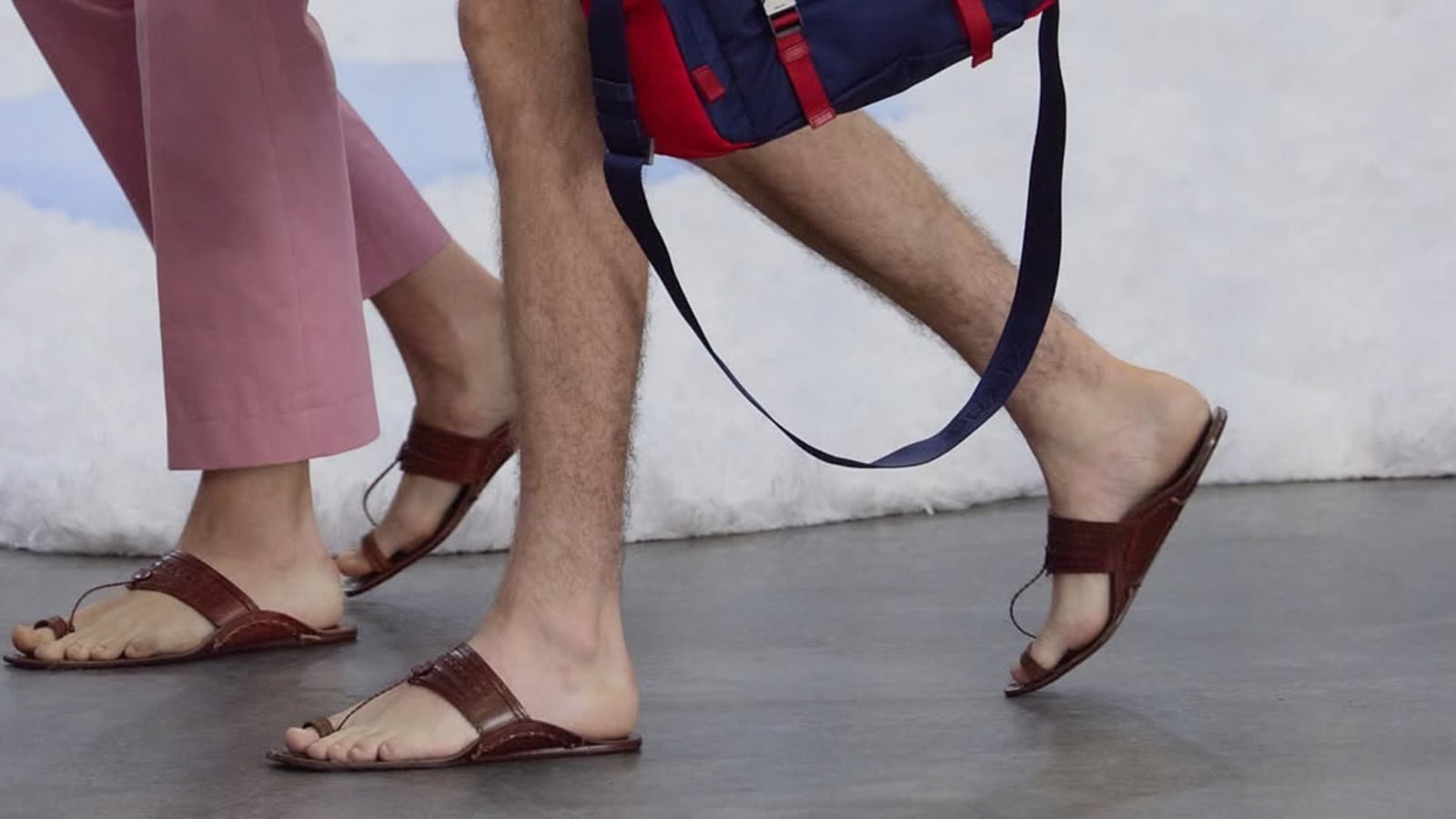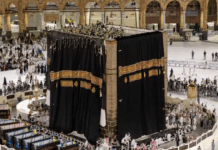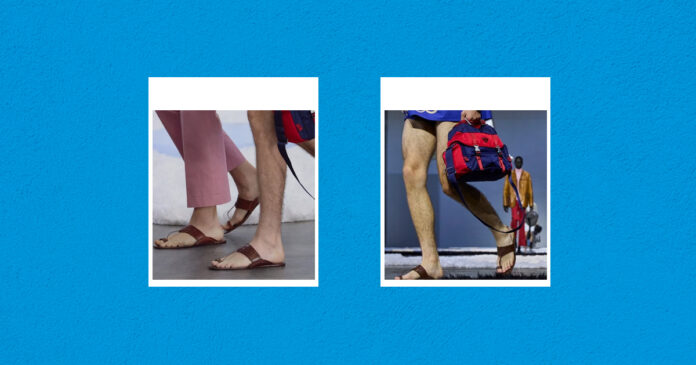Luxury met tradition, and controversy, when Prada faced backlash for showcasing sandals strikingly similar to Kolhapuri chappals. The iconic Indian footwear is centuries old, and it’s now back in the world arena. Prada attempted to refer to them as “leather sandals.” But the world caught up.
A Familiar Design on the Runway
The sandals launched in June at Milan Fashion Week. They featured tan leather, braided straps, and toe rings. They shouted Kolhapuri, but Prada referred to them with no specificity. This outraged those who lived in the South Asian part of the world.
It was called cultural appropriation by critics. They cited the fact that the sandals were being sold at approximately 1.2 lakh Indian Rupees, while craftspeople sell originals for less than 1,000 INR.

Artisans and officials responded quickly. Local producers, particularly those from Maharashtra and Karnataka, felt ignored. They claimed credit and compensation.
The Maharashtra Chamber of Commerce sent a letter to Prada. Karnataka’s Rural Development Minister also complained. They pointed out that Kolhapuri chappals have a GI tag. But they added that the brand never used the words India or artisans with the craft.
Prada’s Response
Under scrutiny, Prada shifted.
The company recognised the sandals’ heritage. They officially declared the design “inspired by traditional Indian handcrafted footwear.” Prada also mentioned they’re willing to partner with artisans, adding that the sandals are still in the early stage, not finalised for commercial availability.
Kolhapuri chappals trace their roots back 800 years. They have borne rural India’s soul through the ages. They give jobs to thousands of artisans, but mass popularity and thin profit margins ensure that makers remain in the struggle.
Now, international attention can yield dividends. If Prada keeps its word, local producers may find new markets and revenue. However, delivery and equitable participation are crucial.
Bigger Questions at Play
This incident raises larger questions. How do luxury brands incorporate historical designs? What is ethical inspiration and cultural pilfering?
Most believe global brands have to acknowledge the stories behind such craftsmanship. Most of all, they need to give back earnings to communities that keep these traditions alive.
Yes, Prada did Kolhapuri proud with its high-fashion makeover. But what will follow matters. A true artisan alliance had the potential to transform savvy heritage into a worldwide opportunity. But if it is another runway stunt, the outrage will be understandable. As Prada rides the spotlight, everyone will see how it respects culture, not merely money.
Stay tuned to Brandsynario for latest news and updates





































